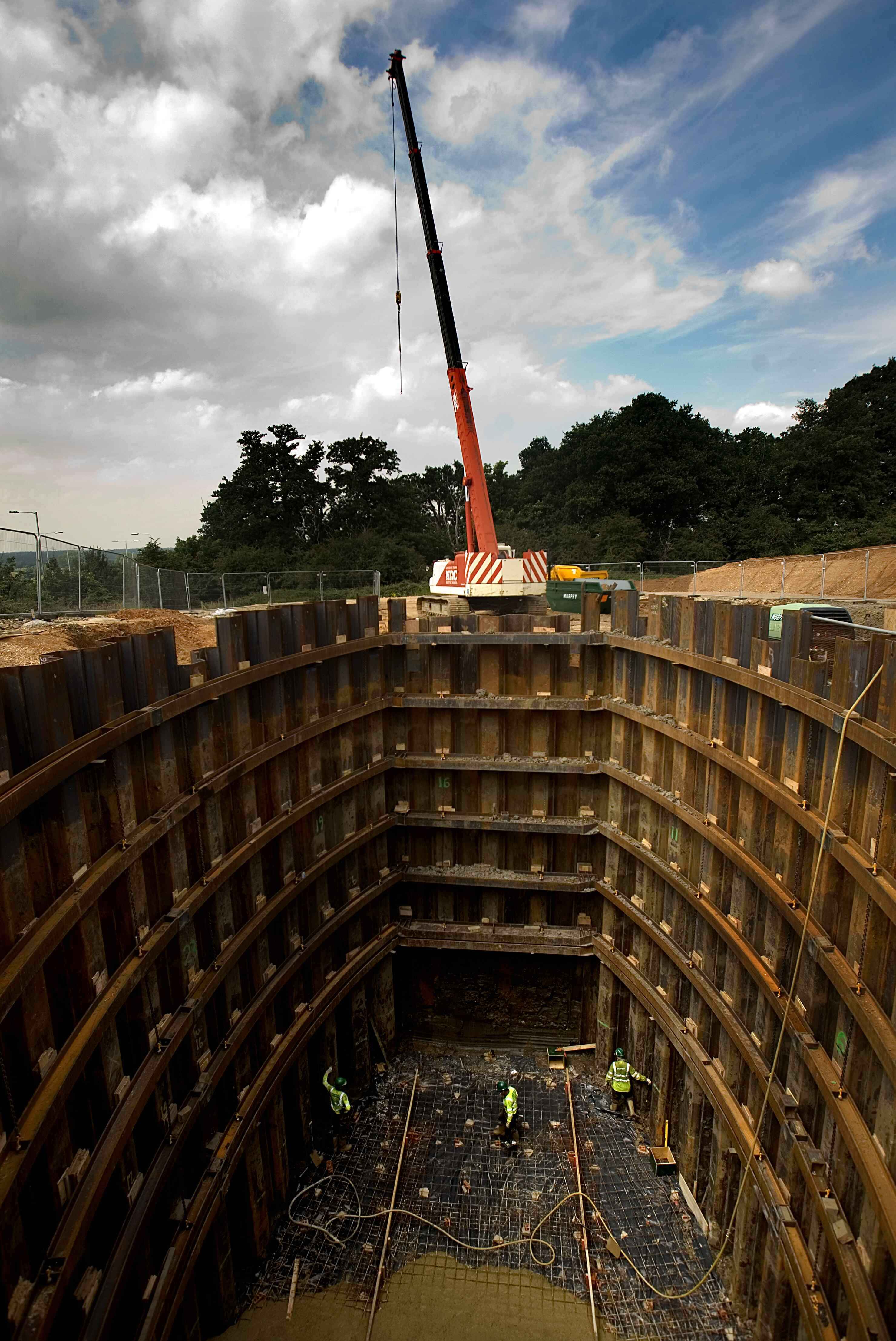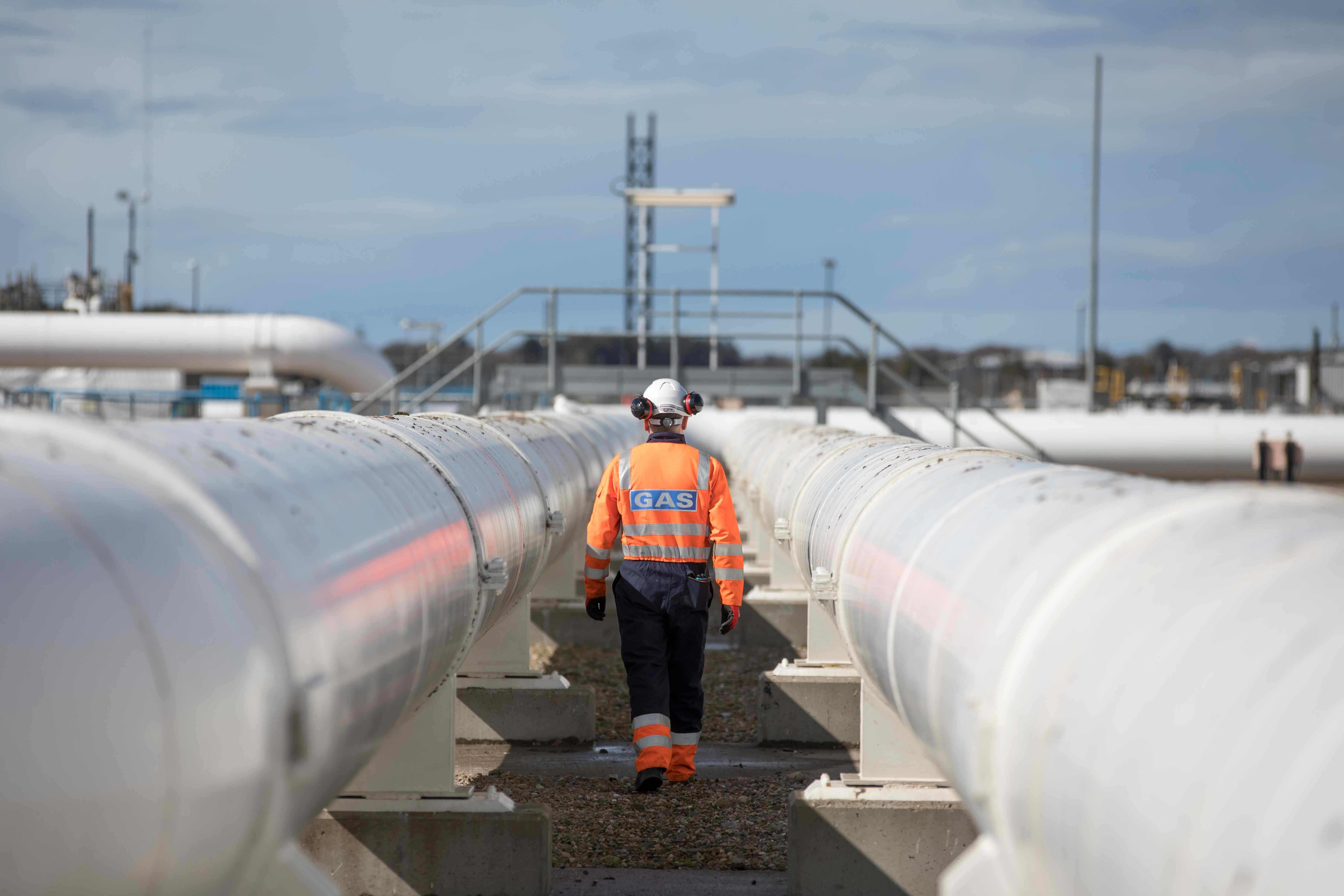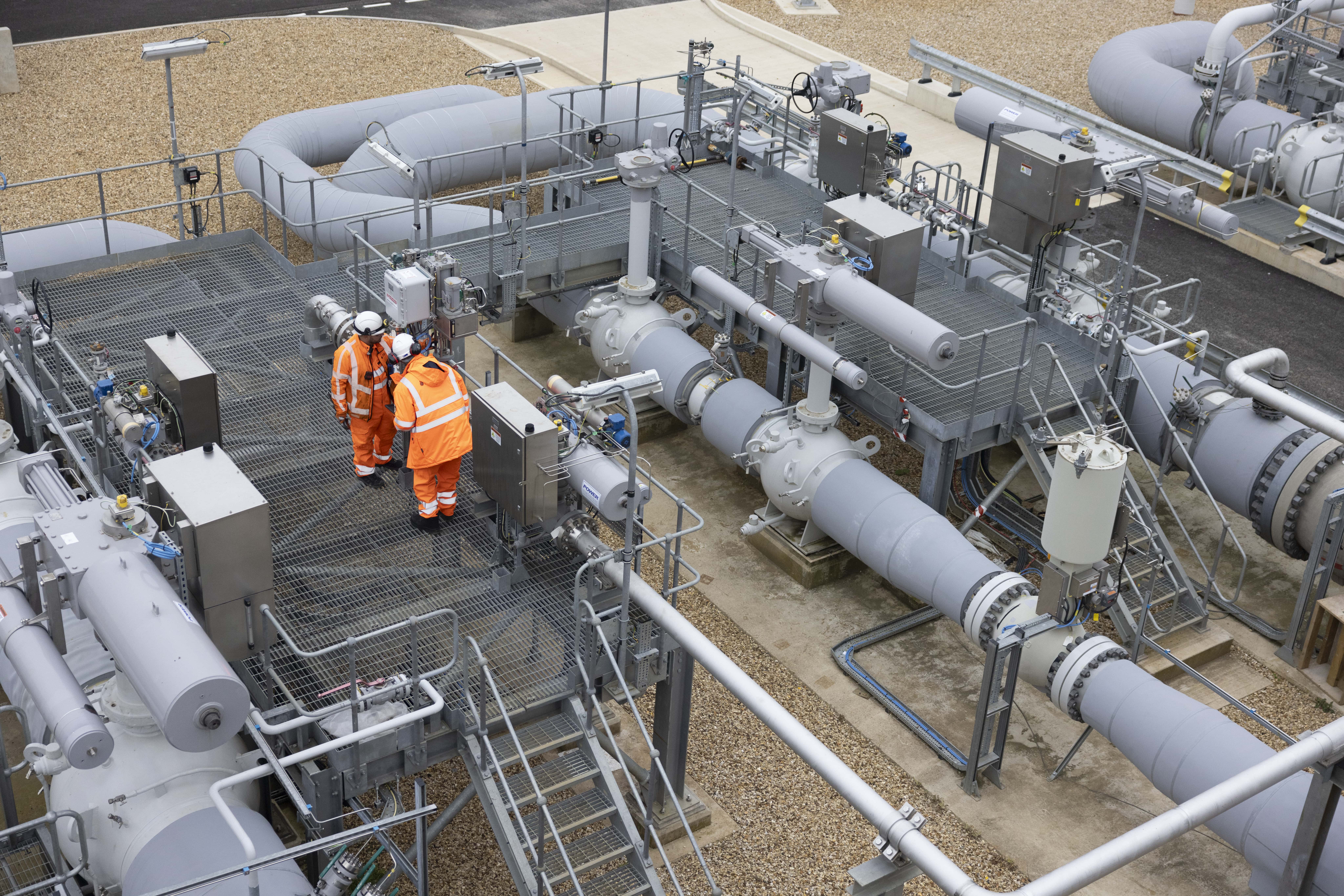Hydrogen

National Gas is developing the infrastructure to transport low-carbon hydrogen as a replacement for natural gas. We are building the capability and flexibility required for a clean energy future at the lowest cost to the energy system, while realising value for the UK economy.
Realising the potential of hydrogen
To achieve net zero by 2050, the UK must transition away from its reliance on fossil fuels and switch in a controlled manner to cleaner alternatives that meet our environmental and economic needs. Hydrogen will be vital in decarbonising our energy system. It can be used in a range of applications including industry, power generation and transport. It can also be used for energy storage – storing molecules for long periods of time and in large volumes, as we do with natural gas today.
Why hydrogen?
- Hydrogen is a light, storable, energy-dense molecule that can be transported through existing transmission pipeline infrastructure
- Hydrogen is already used in industry today and we have the knowledge to take it into other applications
- Low-carbon hydrogen can be produced through a range of techniques, such as electrolysis or natural gas reformation combined with Carbon Capture and Storage (CCS).
The UK’s Hydrogen Strategy estimates that 250-460TWh of hydrogen could be needed in 2050 to achieve net zero, which would make up 20-35% of final energy demand.
How is National Gas supporting the transition to hydrogen?
Building hydrogen transmission infrastructure provides an opportunity to create a single national network, enabling resilience and creating a wide economic market. Building this network will start regionally, based around industrial clusters in the East Coast, North West, Bacton, Wales and Scotland. Ultimately, these regional networks will join up to create a national transmission network – Britain’s hydrogen backbone.
National Gas is supporting the development of this new hydrogen infrastructure in two important ways:
1. Project Union: Building a hydrogen transmission network
Project Union is a programme to develop a new hydrogen network, which will comprise approximately 1,500 miles of pipes running alongside the existing National Transmission System. It will be built by repurposing existing natural gas assets and building new pipelines, where needed. It will interconnect with the European hydrogen backbone through our existing Bacton Gas Terminal. By connecting with LNG terminals and interconnectors, Project Union will enable hydrogen to be imported and exported around the world.

2. FutureGrid: Developing safety standards for hydrogen transmission
To make the transition to a 100% hydrogen transmission network, it’s essential to demonstrate that existing gas pipelines and assets can operate safely with hydrogen. Our FutureGrid programme is using a purpose-built facility at DNV Spadeadam to carry out a wide range of hydrogen tests in an offline environment. These include testing assets with different blends of hydrogen and natural gas, up to 100% hydrogen, to determine the effect on our assets and on network operation.


